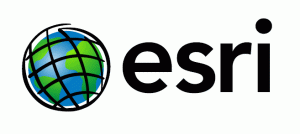Today’s prescription drug epidemic is the deadliest drug crisis in American history, affecting hundreds of thousands of communities throughout the United States, across all demographics. Overdoses from opioids — which include fentanyl, oxycodone and heroin — are now the leading cause of death for Americans under 50 years old.
The number of prescription opioids sold in the United States and the number of prescription opioid deaths have both quadrupled since 1999, with a 540 percent increase in fentanyl-related deaths in the last three years. In 2016 alone, opioids killed roughly 64,000 people — surpassing the number of deaths from guns or car accidents, and outpacing the death toll of the H.I.V. epidemic at its peak.
For December’s Esri MapUp event, “Safe Communities — How GIS Can Help Respond to the Opioid Epidemic,” GovLoop heard from experts Jeff Beeson, Deputy Director & Chief of Staff at Washington/Baltimore High Intensity Drug Trafficking Area (HIDTA); Lindsey Hays, Technical Consultant for Esri; Patrick O’Brien, Solution Engineer, Emerging Business Team at Esri; and Philip Mielke, Industry Patterns Team Lead at Esri, about how health-threat mapping can play a key role in opioid abuse prevention, intervention and enforcement.
President Trump recently declared the opioid crisis a national “public health emergency” and top government priority, but state and local governments are still struggling to prevent drug abuse. One challenge lies in the fact that opioid addiction can have a number of different causes, from over-prescription of pain medication, to improper disposal methods of unused drugs, to limited treatment and rehabilitation resources — where should officials deploy their resources to be most effective?
Even as the opioid epidemic escalates, many government officials also may not understand the true scope of the problem. Because opioid abuse has long been linked to low-income groups, many victims in affluent or isolated communities can fall through the gaps and suffer without treatment. It is clear that there is no one-size-fits-all solution: methods to combat the opioid crisis should be diverse and must be community-specific. While some communities might require more education or public health campaigns, others will require more resource-intensive prevention strategies.
But geo-enabled data and GIS mapping tools allow communities to visualize an accurate picture of how and where opioid abuse is impacting its citizens. GIS can offer a solution to these myriad complexities by providing a holistic picture of drug abuse, collecting data in real time, and sharing information between health and human services, policymakers and law enforcement.
“Part of the problem with the opioid crisis has been that the law enforcement side and public health side rarely talk to each other. They aren’t looking at the same data systems or the same maps, and have different ways of talking about the issue,” said Beeson. “We need to figure out a way to communicate differently, and data helps us do that. Data is the great equalizer and provides us with a universal language.”
HIDTA, for example, has benefited from ODMAP — a simple mobile tool that provides real-time overdose surveillance data across jurisdictions to mobilize an immediate response to an overdose spike. First responders are able to enter data into the system, identifying whether an incident was fatal or non-fatal, where the incident took place and whether or not Naloxone was administered. The entire process takes seconds and immediately uploads data points to a central database.
“This data helps first responders, public health officials and public safety officials see the way drugs are moving and identify patterns, such as what time of day drug overdoses are most likely,” explained Beeson. “If ODMAP registers an overdose spike, for example, this information can be circulated to hospitals, schools and other organizations in the community, giving officials time to deploy rapid response teams and targeted prevention initiatives. Seconds matter, and these real-time decisions can save lives.”
GIS also plays a role in detecting potential fraud in the healthcare system that is fueling the opioid epidemic. Distance analysis — looking at the geographic distribution of opioid prescriptions — can help evaluators and auditors understand where there might be a larger network or pattern of fraud.
O’Brien discussed how Esri has partnered with the Department of Health and Human Services (HHS) to identify fraudulent behavior with geo-enabled data: How far are people traveling for one pharmacy? Are people traveling further distances to go to a specific pharmacy? How many other pharmacies are closer to the beneficiaries? How many pharmacies did they pass on their way to the other pharmacy?
Using GIS analysis, HHS can map realistic boundaries for rural and urban environments (e.g. determining the pharmacy with the shortest drive or walking time from the beneficiaries’ homes and creating a three-mile buffer around that route), apply these parameters to every opioid beneficiary and identify any outliers. Additionally, Esri’s Story Maps feature allows organizations to combine authoritative maps with text, images and multimedia content to shape a coherent narrative about the crisis that can be shared with leaders and community stakeholders.
According to Mielke, providing citizens with this kind of interpreted data and information is crucial. “It’s not just a public health crisis or a law enforcement issue. The problems are interrelated and can’t be solved alone,” he said. “It affects everybody, it is a deep community issue and it takes the whole community to own it and address it.”
With the problem of silos and lack of communication across different agencies and jurisdictions, how can leaders leverage the broader community?
Mielke demonstrated how ArcGIS technology (a cloud-based solution that can also be deployed on-premises) can make it easier to distribute the responsibility of sharing data between agencies and with the public. Esri has developed a number of ArcGIS applications prioritizing four pillars: improved education, accessible treatment, successful prevention and effective response.
“The most important feature of these apps is their mobility — getting data in and out of the field in real time is an important goal,” said Mielke. “Survey123, for example, works offline on any device, can collect photos and information and can be configured with Excel.”
These diverse applications can promote treatment and management options by helping citizens locate nearby drug drop-off boxes, enable drug-tip reporting for citizens or help assign follow-up activities for officers. They can also shape strategy and communication to policymakers, with open data pages to facilitate transparency and data-sharing. Such data can help a task force inform elected officials of mitigation strategies and better advocate for grants and resources.
What makes geospatial technology unique is that it provides an opportunity for communities to tell their own story. “It’s not just about the statistics, but enabling citizens to share their stories of loss and understand the statistics in a meaningful way. To see this information in a map, for your specific community, and have the story told in a narrative perspective is empowering,” Mielke concluded. “Citizens can actually do something about the crisis. This is how policy can be driven from the local level up.”





Leave a Reply
You must be logged in to post a comment.